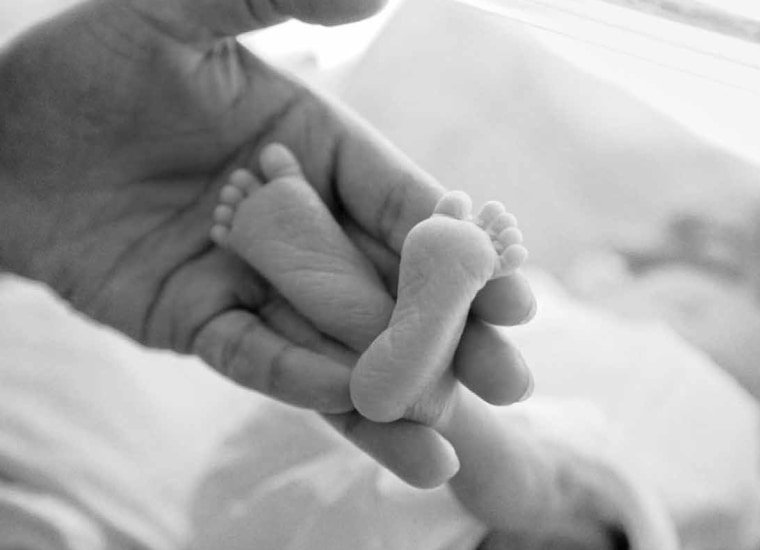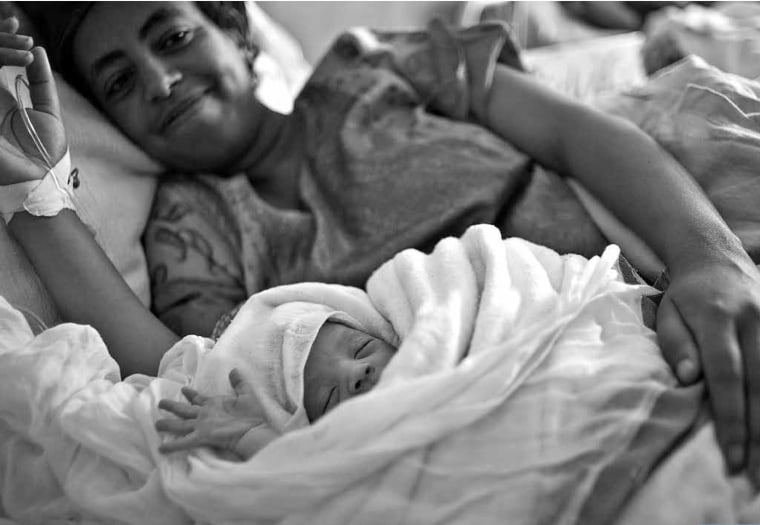The U.S. is a worse place for newborns than 68 other countries, including Egypt, Turkey and Peru, according to a report released Tuesday by Save the Children.
A million babies die every year globally on the same day they were born, including more than 11,000 American newborns, the report estimates. Most of them could be saved with fairly cheap interventions, the group says.
“The birth of a child should be a time of wonder and celebration. But for millions of mothers and babies in developing countries, it is a dance with death,” the report reads. “A baby’s first day is the most dangerous day of life—in the United States and countries rich and poor,” it adds.
“The United States has the highest first-day death rate in the industrialized world. An estimated 11,300 newborn babies die each year in the United States on the day they are born. This is 50 percent more first-day deaths than all other industrialized countries combined.”
Globally, most babies who die at birth die because they were born too early – 35 percent of all newborns who die were pre-term, Save the Children finds. Another 23 percent die because of complications at birth, such as a failure to draw breath right away. Another 23 percent die from severe infections and 9 percent die because of birth defects.
The report is the first to dissect out specifically deaths on the first day of life.
Save the Children says it’s not precisely clear why the United States does so poorly in protecting newborns, but says politics and culture both play a role.
“Many babies in the United States are born too early. The U.S. preterm birth rate (1 in 8 births) is one of the highest in the industrialized world (second only to Cyprus). In fact, 130 countries from all across the world have lower preterm birth rates than the United States,” the report reads.
Teen births are partly to blame, the report says – echoing other research that has shown this. The U.S. has the highest teenage birth rate of any industrialized country.
“Teenage mothers in the U.S. tend to be poorer, less educated, and receive less prenatal care than older mothers. Because of these challenges, babies born to teen mothers are more likely to be low-birthweight and be born prematurely and to die in their first month. They are also more likely to suffer chronic medical conditions, do poorly in school, and give birth during their teen years (continuing the cycle of teen pregnancy),” the report says.

“Poverty, racism and stress are likely to be important contributing factors to first-day deaths in the United States and other industrialized countries.”
The March of Dimes, a charity that focuses on healthy births, says infant mortality fell by 12 percent between 2005 and 2011, and premature births have fallen by 8.5 percent since 2006. "This rate reduction has meant 125,000 fewer premature births and an estimated cost savings of about $2 billion," the group said in a statement. The Centers for Disease Control and Prevention says 24,586 U.S. babies died before they turned 1 in 2010, compared to 23,910 in 2011.
"This has been accomplished with a variety of known, effective health interventions, including: providing access to health care to all women of childbearing age; risk reduction, including not smoking during pregnancy; progesterone treatments for women who have had a previous preterm birth; better management of fertility treatments to reduce multiple gestations; hospital quality improvement initiatives to eliminate elective early inductions and cesarean deliveries before 39 completed weeks of pregnancy."
Half of all U.S. pregnancies are unplanned, another complicating factor, the report says. Women whose pregnancies are accidental are much less likely to take good care of themselves and to get thorough prenatal care, from vaccines to vitamins, that can protect the baby and her.
“High-quality care before, during and after pregnancy (including home visits by nurses or community health workers if appropriate) and access to the appropriate level of care at the time of delivery can result in healthier mothers giving birth to healthier babies,” the report says. Such home visits are common in Europe, but very unusual in the United States.
The report also strongly links a country’s politics to its newborn death rate. “Women hold only 18 percent of seats in the United States Congress,” the report says. “Sixteen countries have more than double this percentage of seats occupied by women. In Finland and Sweden, for example, women hold 43 and 45 percent of parliamentary seats, respectively.”
Finland and Sweden have the lowest rates of newborn deaths in the world.
More children die at birth in India than anywhere else, followed by Nigeria, Pakistan and China, the report finds.
But four products costing between 13 cents and $6 each could save one million newborns a year, the report says. They are: simple bag-and-mask devices to help babies breathe; the antiseptic chlorhexidine to prevent umbilical cord infections, antibiotics to treat infections; and steroid injections to delay preterm labor. “Save the Children estimates that within the first month of life, more than 1 million babies could be saved each year with universal access to these products,” the report reads.
“Other low-cost interventions such as kangaroo mother care and early and exclusive breastfeeding would save many more babies.” Kangaroo care is skin-to-skin contact that keeps babies warm and stimulated.
Education is also key, the group says. “The more time girls spend in school, the later they marry and begin childbearing. Educated girls also are more likely to grow up to be mothers who are healthy, well-nourished, economically empowered and resourceful when it comes to caring for themselves and their babies. “
Bangladesh is one success story – it has has reduced newborn mortality by 49 percent since 1990, the report says. “Increased family incomes, lower fertility rates and higher levels of female education likely account for a significant share of this success,” it says. Door-to-door health workers have also helped, it says.
Related:
